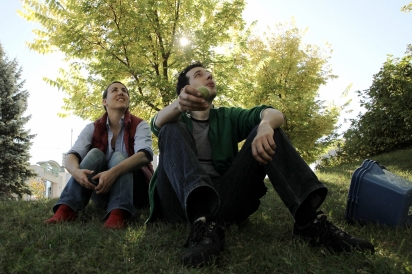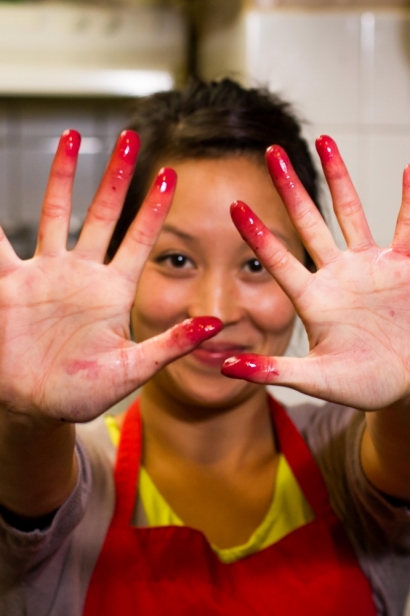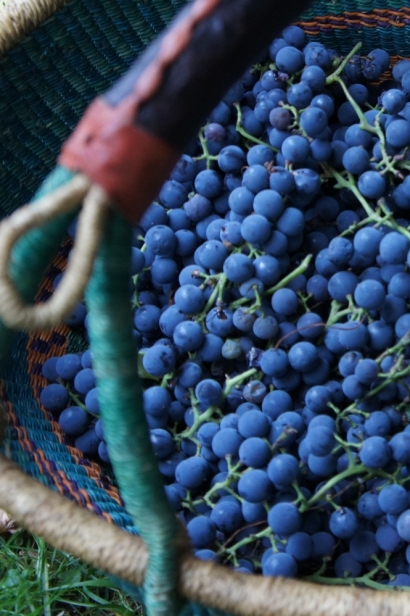Hidden Harvest
Spring is upon us and it’s good to see. Week by week, the city transforms into a truly green place. It’s a feast for the eyes, but we tend to forget that, not so long ago, those annual rhythms also brought more literal feasts — new vegetables in our gardens, new fruit and nuts on our trees. Our modern selves now forage in the grocery stores. That’s too bad, because there are a lot of fruit and nut trees in the city of Ottawa that are typically not harvested — their produce going to waste while many city-dwellers have diets deficient in the very nutrients that wind up rotting on roads, sidewalks and private lawns.
To address that problem, three years ago, two local social activists, Katrina Siks and Jay Garlough, founded Hidden Harvest, an organization that brings together volunteers to pick the fruit and nuts that would otherwise never reach a human belly. That’s the primary goal: preserving the fresh feast of nature’s bounty. “People have been gleaning food from the land forever — and it was really too bad that we weren’t doing this in Ottawa, where all kinds of people need more fruit in their diet and where there are all kinds of trees bearing healthy, organic fruit or nuts,” says Siks.
The harvest that volunteers pick is divided four ways — to local food agencies, to the tree owners, to the volunteers and to Hidden Harvest itself, which uses its share to offset expenses. In addition to sharing in the harvest, volunteers have great fun working together and really help build a sense of community in the areas of the city where they put their pruning shears to work. “For our volunteers, this is a great opportunity for reconnection to nature and the world around us,” Siks says. “A generation or two back, this was a way of life that was handed to us from our parents and grandparents — and the volunteers seem to enjoy that step back in time.”
For Garlough, an important satisfaction is simply that, thanks to Hidden Harvest’s work, less food is being wasted. “As a member of a family that’s been farming for seven generations, it hurts to walk past trees that are going unharvested. It’s wonderful to harvest fruit and nuts and get them to people who are now going hungry.” Local trees and vines provide a surprising range of fruit and nuts, among them serviceberries, cherries, mulberries, plums, grapes, apples, pears, chokecherries, hazelnuts and walnuts. There are more than 17,000 fruit- and nut-bearing trees on city property. That is roughly 10 times the number on the average orchard farm.
Last year, Hidden Harvest had 650 volunteers who harvested 6,000 pounds of food that reached 7,000 people. A typical harvest event is celebratory. Five or six volunteers meet with a neighbourhood leader who has had three or four hours of training in good harvest practices. The volunteers include everyone from teenagers to retirees. They’re encouraged to be chatty with passersby — but that’s easy, because people are invariably intrigued by seeing something that used to be commonplace. Last year, Siks and Garlough took much of their quarter of the pickings and had them preserved by Lowertown Canning Company, Top Shelf Preserves, and Michael's Dolce (a gourmet confectionary). Those companies received 70 per cent of the product as payment and returned 30 per cent to Siks and Garlough, who used it to promote Hidden Harvest. The pair wants to continue such arrangements in coming years.
Hidden Harvest also has help from local businesses. Bridgehead gives the group one dollar from each pound of its Hidden Harvest Blend, which it sells in summer. At Beau’s Oktoberfest, Hidden Harvest volunteers run some of the midway games and in turn, a portion of the event proceeds provides support for Hidden Harvest's administrative costs. (Both Siks and Garlough hold separate jobs; the benefits of Hidden Harvest are far more social than financial.).
Anyone can take part in Hidden Harvest’s work. On the website, people who want to participate can register as volunteers. Homeowners who have trees that need harvesting can register those trees online. (No harvest event will ever take place without advance warning to the homeowner.) While all volunteers are welcome, Siks points out that there is a particular need for neighbourhood leaders to organize the volunteers and ensure that harvested fruit is delivered with dispatch to food banks, to the tree owners and to the volunteers themselves. People can also buy vines or trees that will be harvested in the future. Many have bought trees for Ottawa Community Housing, which is losing all its ash trees to the ash worm. Buyers can also plant the trees on their own property and register them for eventual harvesting. Costs range from $5 to $90, depending on the type and maturity.
If you’d like to volunteer and wonder what harvesting possibilities are in your own neighbourhood, the website has a map of all fruitand nut trees on city property, as well as the number of trees and volunteers by neighbourhood. Participants can only win — they have a lot of fun and improve their diets.Siks and Garlough hope that Hidden Harvest helps contribute to an evolution of values. “Values do change,” Garlough says. “Right now, we don’t have a particular taboo against wasting food, but that may be changing. “We used to litter a lot — but that’s become really taboo. “When thousands of people in Ottawa depend on food banks, when everyone could use a healthier and more nutritious diet, when we’re all becoming aware that we are stewards of this planet — well, I think that very soon none of us, with any good conscience, will be able to carelessly waste food.”
Hidden Harvest
ottawa.hiddenharvest.ca








